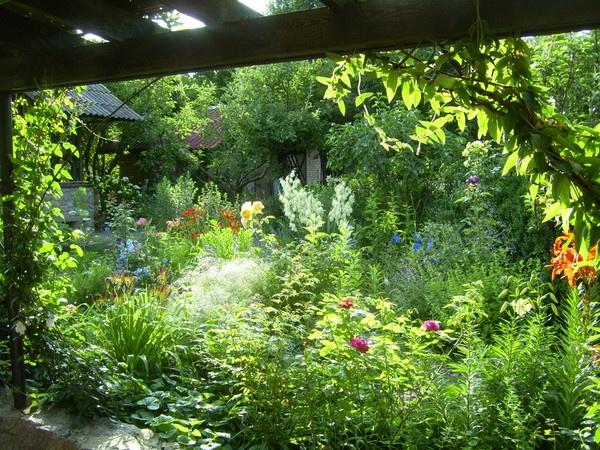
We all like that in addition to the hassle of taking care of the garden, there would be more time to relax, the opportunity to enjoy the fruits of their actions over a cup of tea in the company of friends or family. The more my garden resembled the garden I had seen in my dream, the more I wanted to sit and enjoy it. And ever since I had been in the rose garden in my dreams, that desire had become almost irresistible.
Therefore, because of the desire to use the garden for joy and relaxation, I constantly try to minimize, optimize the garden.
Over the years of gardening, I have found several solutions that allow me to sit down more often on vacation.
In the flower garden, I almost do not grow annuals. This allows me to get away from the spring digging in the flower beds. Planting annual flowers is practiced only if the planted perennials are still very small and the space between them is empty. Then, to clear the empty land overgrown with weeds, I populate it annually. There is such a great variety of them that almost any perennial can choose a company. After a year or two, the perennials grow, intertwine, and there are almost no leaves or weeds between them.

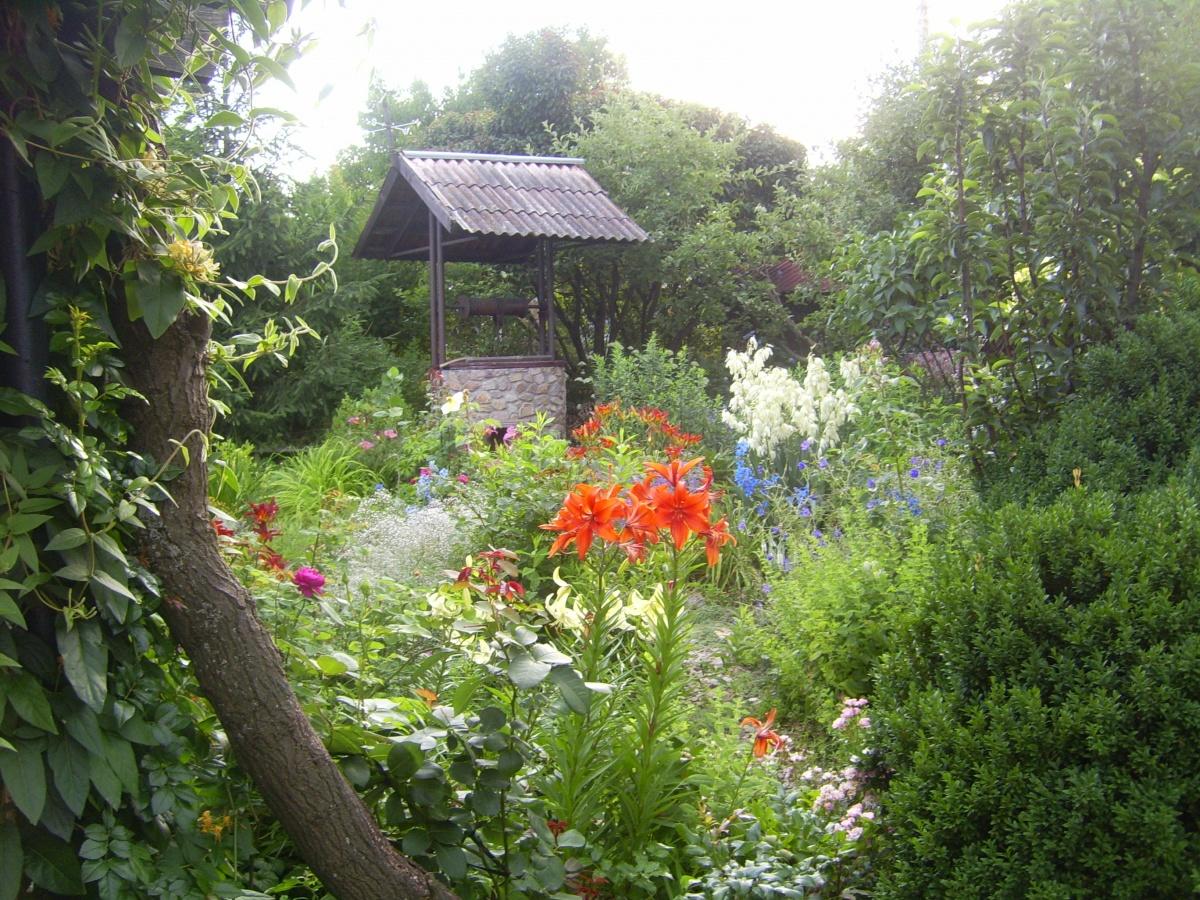
You can also get rid of the weeding work by using various techniques. For example, you can mulch the ground under the plant with a thick layer of bark or sawdust. Before use, it is advisable to mulch the material with bark or sawdust, steam it, or simply scald it with boiling water. From such treatment, larvae and bedbugs that can damage plants die. A thick, 5-10 cm (2-3.9 inches) layer reliably blocks the access of light to the weeds.
A very interesting option for suppressing weeds, for example on an alpine hill, with filling up free areas with plants of small pebbles or gravel. In addition, to prevent the crushed stone from sinking in the ground, it is necessary to put a special fabric-geotextile. It can be replaced with the currently available lutrasil or non-woven fabric, but the service life of these materials is much shorter. In short, you can use any synthetic material that does not decompose under the influence of natural factors. This can be cellophane, pre-pierced in many places or perforated.
Tip: on the rubble, scatter more stones — then the hill will look like a rocky scree, where live plants have settled.
Drawback: gravel, pebbles, and crushed stone are still polluted with plant debris over time. In such cases, the designers recommend to collect, wash and re-apply the gravel coating. But this did not have to be done, I recommend simply not to leave the dried ground parts of the plants for the winter, carefully removing them in the fall. It is not advisable to make such a cover under deciduous trees, especially with small foliage.
When preparing the soil for planting perennials, I try to clear the soil of the weeds that live in it. Sometimes, if the soil is heavily contaminated, herbicides are used.
A little sprinkling of actively growing weeds, and after waiting a couple of weeks, you can safely dig the ground, however, choosing rhizomes. The soil after these treatments is loose, light compost. There is no need to spend time and energy installing roots when digging.
The problem in the next season may indeed remain due to the fact that the seeds have been preserved in the soil. But young weeds are easier to deal with than adults, with strong rhizomes. It is important not to miss the moment and remove them, so it may be several times, but each time the new grass will be less and in the end you will be able to get rid of them forever.
Ideally, when preparing polluted areas, weeds are treated twice with herbicides in spring and autumn. Planting is carried out next spring.
If you do not want a flock of enemies to your garden, then do not use all sorts of chemicals, herbicides on the site, they can be replaced with a shelter – a black ribbon for the season, covering the land intended for the garden or flower beds. Cellophane is good, but if there is no place to buy it, then its absence can be explained by cardboard boxes.
It wasn’t even a few years ago that I stopped digging almost all over the garden. Under the apple trees, bentgrass began, which covered the ground with a light carpet, and mulch of various kinds lay on the flower beds. It can be any material of organic or mineral origin: paper, cardboard, nut shells, humus, grass, hay and straw, crushed wood, bark, compost.
Good mulch and sawdust. It is only necessary to remember that coniferous sawdust and wood shavings can inhibit the growth of plants with energy-intensive selection of essential oils. Although, on the other hand, they can also help fight some plant diseases by scaring off aphids or other small killers.
I put a layer of compost on the strawberry beds, and then spread out the spunbond.
Covered with mulch, the ground remains loose and breathable all season. Capillaries, penetrating into the ground, are not disturbed and moisture and air circulate in it, helping to live the root systems of plants and useful bacteria in the soil. But where the ground is clean, free of mulch, it dries up and becomes hard as a rock.
By the way, do you know why mulching is sometimes called “dry watering”? This is all the work of the capillary system. Steam rises from the soil, from its depths. When it encounters cold air on the surface in the early morning, it settles in droplets on the surface of the mulching materials. These droplets merge into larger drops, and again return to the ground, which has been warmed by the sun for a day, again turn into steam and rush to the surface, where they again turn into dew. And so many times.
The downside of mulching the soil there is that the weed seeds spread out from the lower layers of the soil begin to grow with renewed vigor. So it is best to simply loosen the soil by 7-10 cm (2.7-3.9 inches). I do this with the help of a Trident-ripper, my neighbors in the dacha are happy with Fokin’s flat-cutter. It is best to cover the excavated ground with plants as soon as possible.
Sometimes, instead of mulching, I use the method of covering the soil under perennials, especially shrubs, trees, large flowering plants, groundcover plants. In my garden, there are firmly established iberis, violets of all kinds, phlox awl-shaped, a pillow of thyme of various types, cerastia, periwinkle. In addition to the abundant flowering in the spring, they are all summer, and most of them and even winter, form a magnificent pillow, through which the weed does not even try to crawl.
And yet, despite all the tricks, weeds still sometimes hatch. It is very important not to miss the time of the first weeding, and in the future it is impossible to allow the weeds to give seeds. This will lay the foundations for a permanent reduction in the number of weeds in your flower beds and allow you to relax in the garden.
Another way to reduce the amount of work in the garden is to optimize the process of watering and fertilizing plants. My plan is still in development, and this is a way to supply water and fertilizer directly to the plant roots. in particular, drip irrigation and irrigation of large plants through wells.
With drip irrigation, everything is more or less clear: it is necessary to lay out a watering tape or a dropper in the beds, connected by a tube to the main water pipe. This topic is very large and it is necessary to devote a separate conversation to it.
For watering trees and shrubs in the garden, you can use either a drip or pour water into specially prepared pits. To do this, drill holes along the perimeter of the crown of a tree or shrub with a garden drill, fill them with crushed stone, sand, gravel (that is) and make watering and fertilizing in these holes.
There is another very decorative option: make grooves around the trees, fill them with gravel and put a ring of stones on top. Irrigation water itself will flow into these drainage grooves, and not spread over the surface of the soil, while remaining inaccessible to the roots.
To reduce the work in the garden will help the choice of herbs for the lawn, which does not need regular mowing. A large area among the flowerbeds and perennial borders in my garden is a lawn of thyme, bent grass and white clover. They grow alternately, and some in large patches. Periodic mowing after flowering of these herbs is also good.
I must say that a lawn made of thyme is something! Walking on it is a pleasure: the flattened stems exude a magical aroma. During flowering, the meadow turns pale lilac. Then it is desirable to mow the lawn of thyme, and collect and dry the inflorescences. I use thyme as a seasoning for meat, fish, eggs, stuffing them with pillows — they go to bed very well.
Bentgrass is just as good in shady places. Here it is, soft as silk. But on the lawn of white clover, you need to be careful: during flowering, it is very fond of bees and walking on it barefoot is very dangerous.
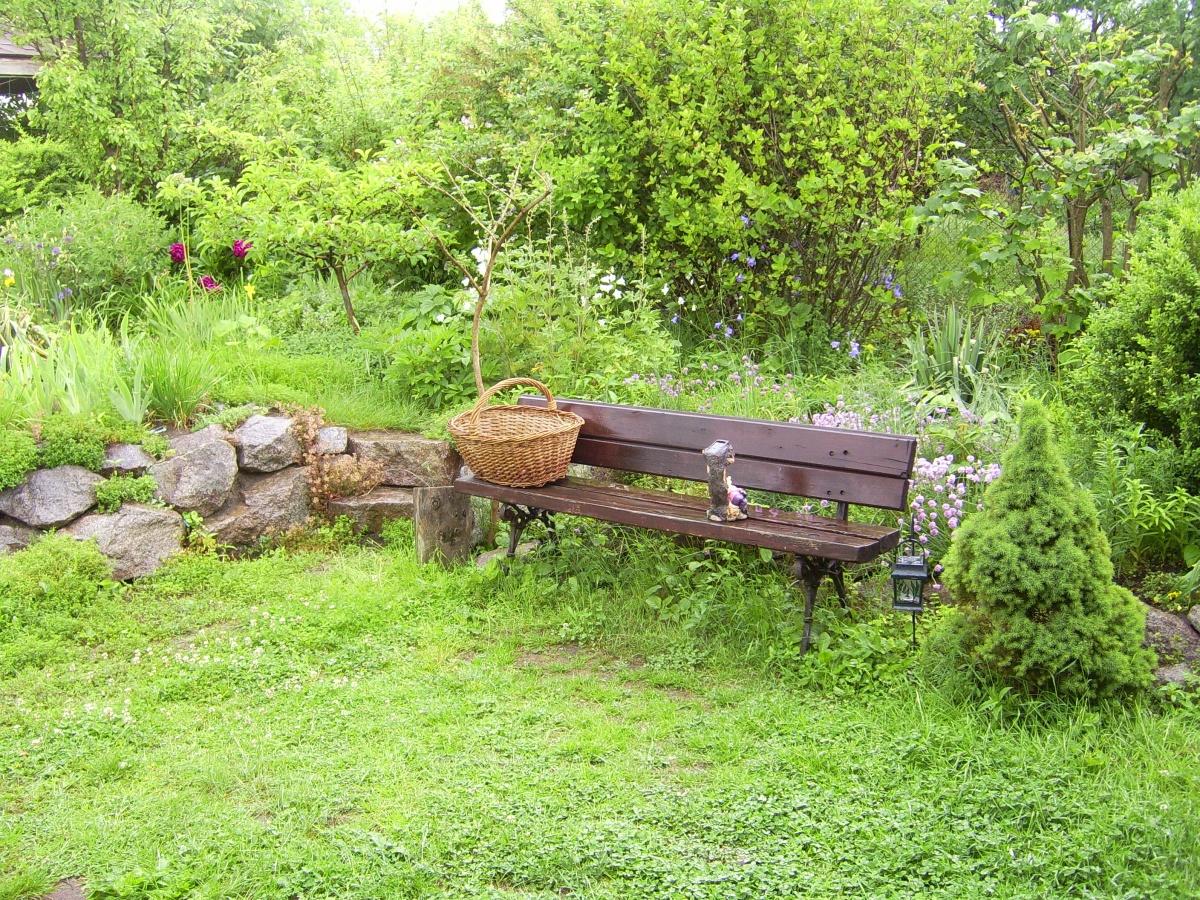
But white clover is good not only because it creates a beautiful low mat. Clover also enriches the soil with nitrogen.


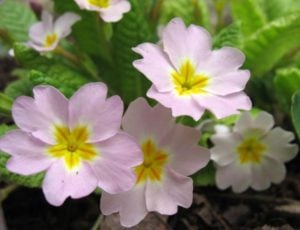
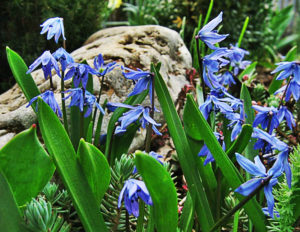
Leave a Reply